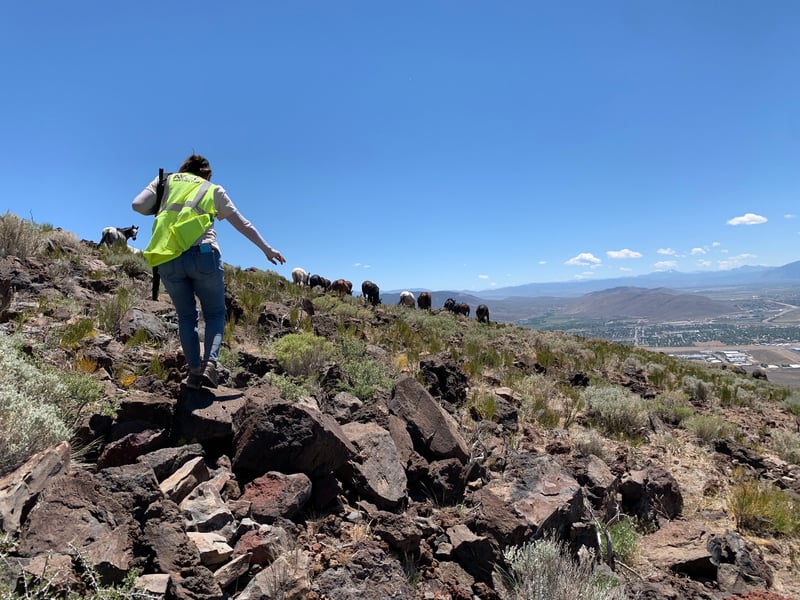(CN) — Elena Sullivan inhaled to steady the dart gun as the herd of wild horses cavorting in the Virginia Range near Carson City, Nevada, maneuvered themselves in a way that finally afforded a clean shot at her target — a chestnut mare named Pinto.
Sullivan is a volunteer darter with the American Wild Horse Campaign and part of a sprawling volunteer effort to prove that wild horse advocates can use fertility control to restrain the growing population of wild horses in northern Nevada.
In April 2019, the American Wild Horse Campaign signed a cooperative agreement with the Nevada Department of Agriculture that allows the nonprofit to implement and manage a fertility control program that involves shooting darts full of porcine zona pellucida, a vaccine delivered with CO2 rifled that are intended to stop mares from procreating.
“Birth control works,” said Sullivan. “There is attrition in the range and the foal numbers are down, and so we see a reduction in population.”
With an issue so highly contentious as wild horses in the American West, there is, of course, significant disagreement about whether the plan works and whether it can reliably be exported to other management areas, but Sullivan and Deb Walker, the executive director of the program, believe they have found a humane alternative to policies that mandate helicopter-involved roundup and an adoption program rife with abuse.
“The agency that is charged with the management and care of wild horses is instead facilitating their slaughter,” said Walker, as she looked toward the Coal Band of horses grazing in the sagebrush.
Walker is talking about the Bureau of Land Management, which manages most of the wild horses throughout 10 states in the American West and in Nevada, where much of the state is managed by the federal government.
Interestingly, the BLM does not manage the horses in the Virginia Range outside that wander in the public lands outside of Carson City and Reno. That is under the purview of the Nevada Department of Agriculture, which has agreed to contract with the Wild Horse Connection to perform the fertility control program on the 3,000 or so horses that wander over a triangle-sized piece of desolate land that extends from Reno to Fernley in the east and to Carson City in the south.
However, Walker and Sullivan are convinced that if they succeed in managing the horses outside of Virginia City, they will provide a valuable template that can be reliably exported to other management areas throughout the American West.
They will have to overcome the skepticism of people like Doug Busselman, executive vice president of the Nevada Farm Bureau.
“I salute the commitment of what they are doing, but I don’t think it’s going to work,” Busselman said.

Sullivan took Courthouse News and Walker out to what is colloquially referred to as Creepy Canyon in the unincorporated area of Mound House, Nevada. The landscape is characterized by a lack of trees apart from the cottonwoods huddled in the creek beds. The volcanic rock that crops up in places along the shoulders of the rolling hills is brown to black and differs starkly from the bright gray of the granite that characterizes the Sierra Nevada only a stone’s throw to the west.
Wild rye, rabbitbrush and sagebrush fan out on the flanks of the hills while silver willows gather with the cottonwoods near the drainage rivulets where the water flows.
The mustangs that graze among the sparse grassland are perhaps the most iconic aspect of the landscape, aside from the neon signs of the numerous legal brothels that flourish outside of Virginia City.













